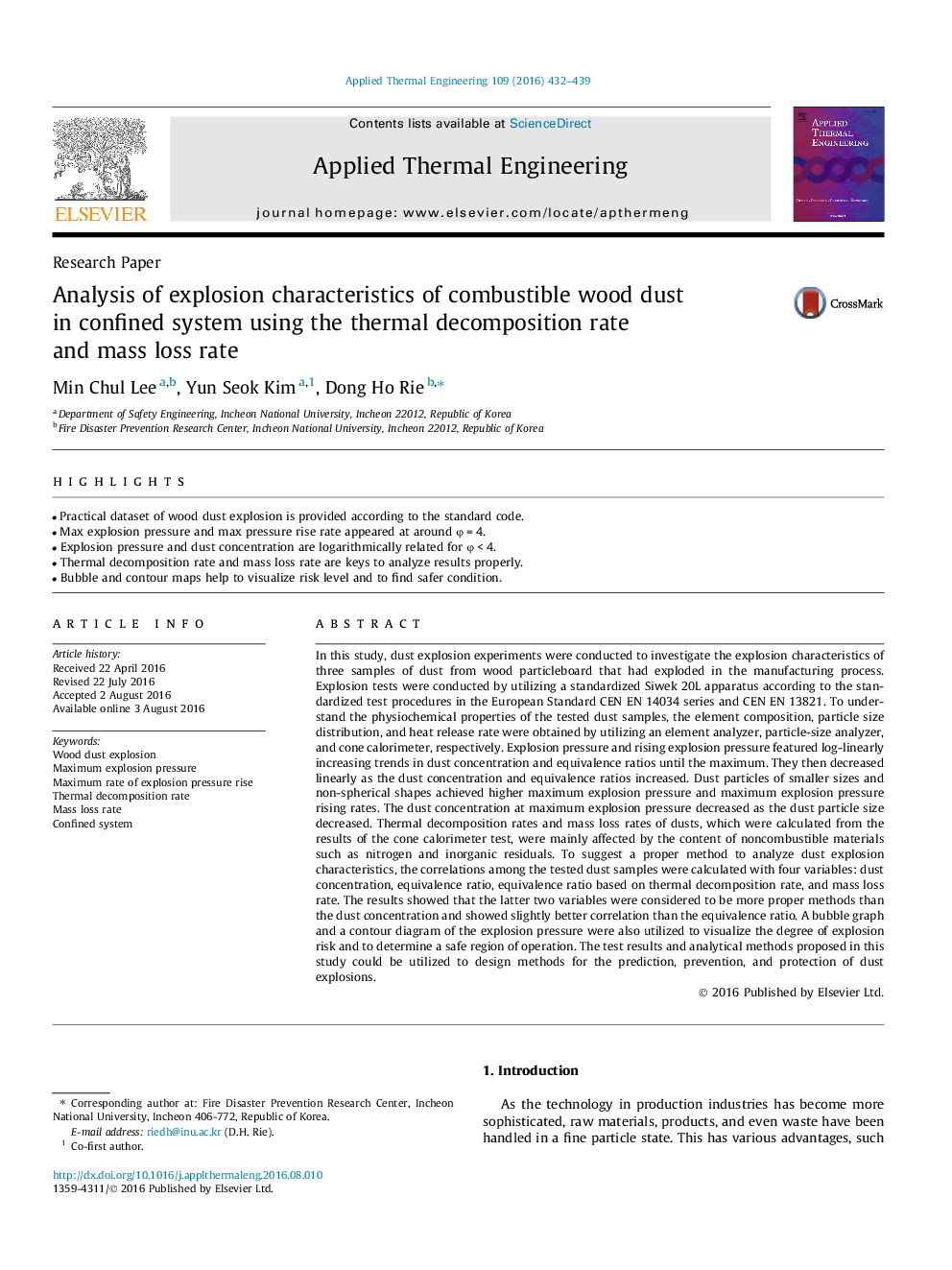| کد مقاله | کد نشریه | سال انتشار | مقاله انگلیسی | نسخه تمام متن |
|---|---|---|---|---|
| 6481169 | 1368130 | 2016 | 8 صفحه PDF | دانلود رایگان |
- Practical dataset of wood dust explosion is provided according to the standard code.
- Max explosion pressure and max pressure rise rate appeared at around ÏÂ =Â 4.
- Explosion pressure and dust concentration are logarithmically related for ÏÂ <Â 4.
- Thermal decomposition rate and mass loss rate are keys to analyze results properly.
- Bubble and contour maps help to visualize risk level and to find safer condition.
In this study, dust explosion experiments were conducted to investigate the explosion characteristics of three samples of dust from wood particleboard that had exploded in the manufacturing process. Explosion tests were conducted by utilizing a standardized Siwek 20L apparatus according to the standardized test procedures in the European Standard CEN EN 14034 series and CEN EN 13821. To understand the physiochemical properties of the tested dust samples, the element composition, particle size distribution, and heat release rate were obtained by utilizing an element analyzer, particle-size analyzer, and cone calorimeter, respectively. Explosion pressure and rising explosion pressure featured log-linearly increasing trends in dust concentration and equivalence ratios until the maximum. They then decreased linearly as the dust concentration and equivalence ratios increased. Dust particles of smaller sizes and non-spherical shapes achieved higher maximum explosion pressure and maximum explosion pressure rising rates. The dust concentration at maximum explosion pressure decreased as the dust particle size decreased. Thermal decomposition rates and mass loss rates of dusts, which were calculated from the results of the cone calorimeter test, were mainly affected by the content of noncombustible materials such as nitrogen and inorganic residuals. To suggest a proper method to analyze dust explosion characteristics, the correlations among the tested dust samples were calculated with four variables: dust concentration, equivalence ratio, equivalence ratio based on thermal decomposition rate, and mass loss rate. The results showed that the latter two variables were considered to be more proper methods than the dust concentration and showed slightly better correlation than the equivalence ratio. A bubble graph and a contour diagram of the explosion pressure were also utilized to visualize the degree of explosion risk and to determine a safe region of operation. The test results and analytical methods proposed in this study could be utilized to design methods for the prediction, prevention, and protection of dust explosions.
Journal: Applied Thermal Engineering - Volume 109, Part A, 25 October 2016, Pages 432-439
